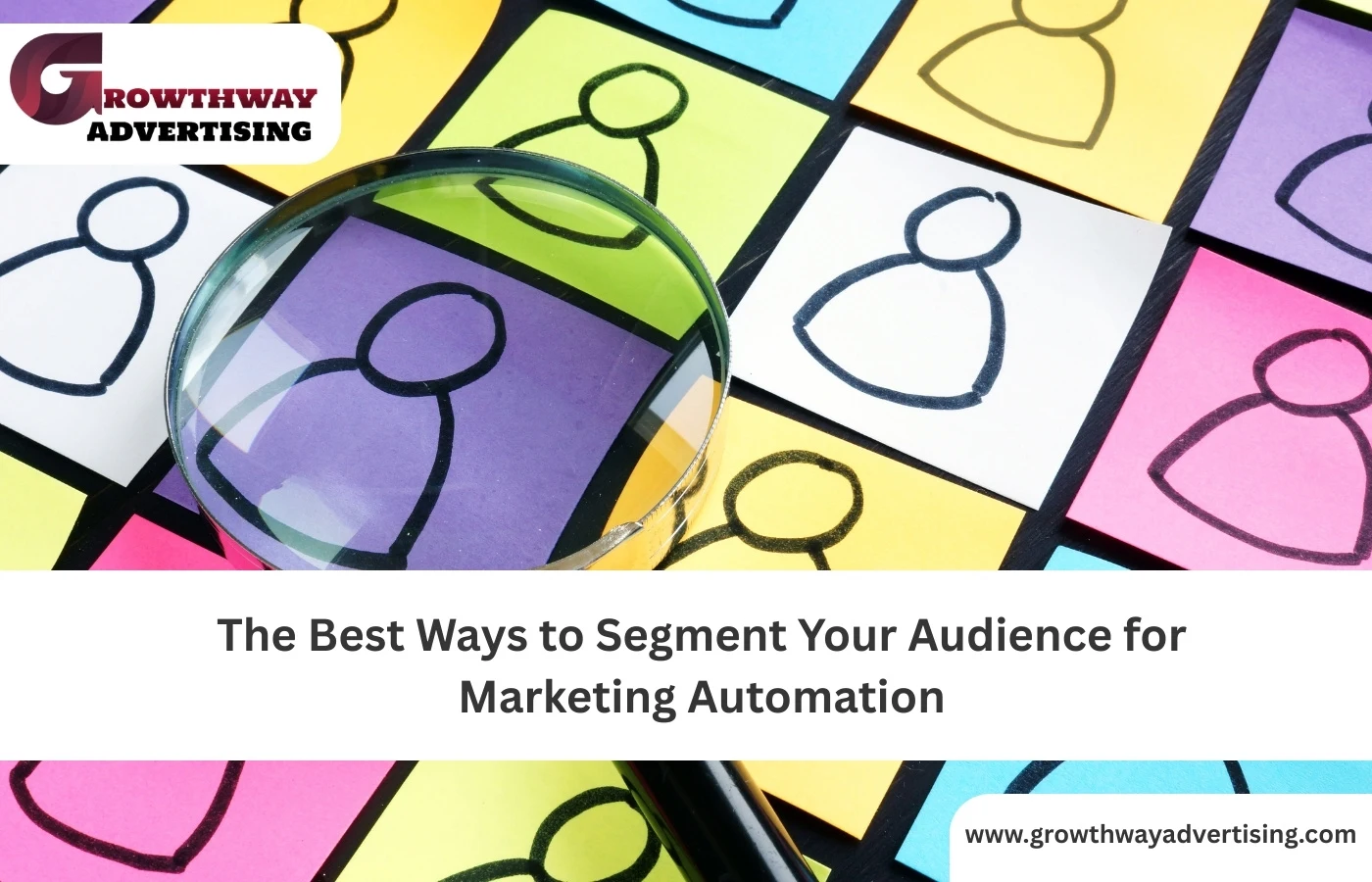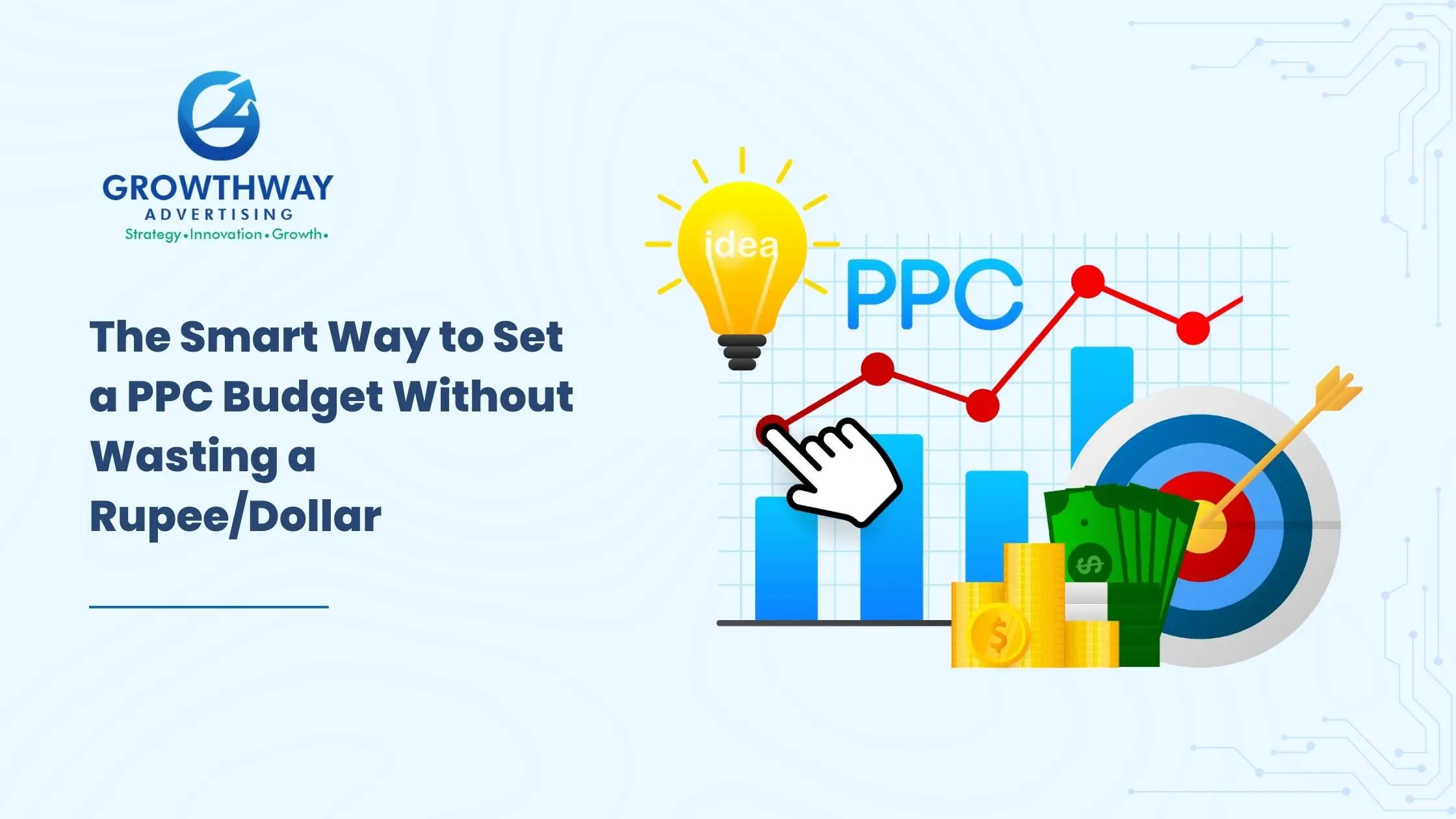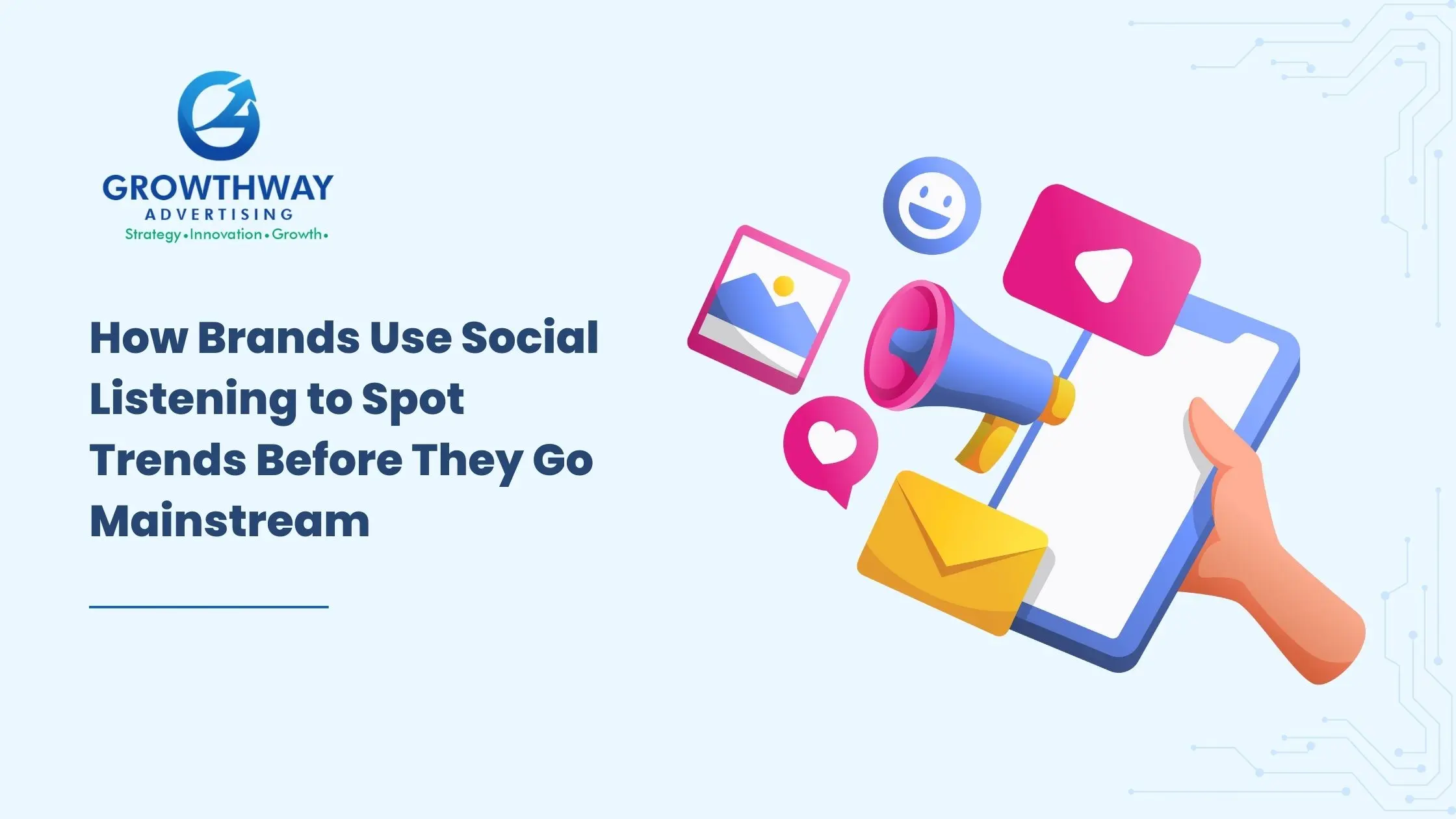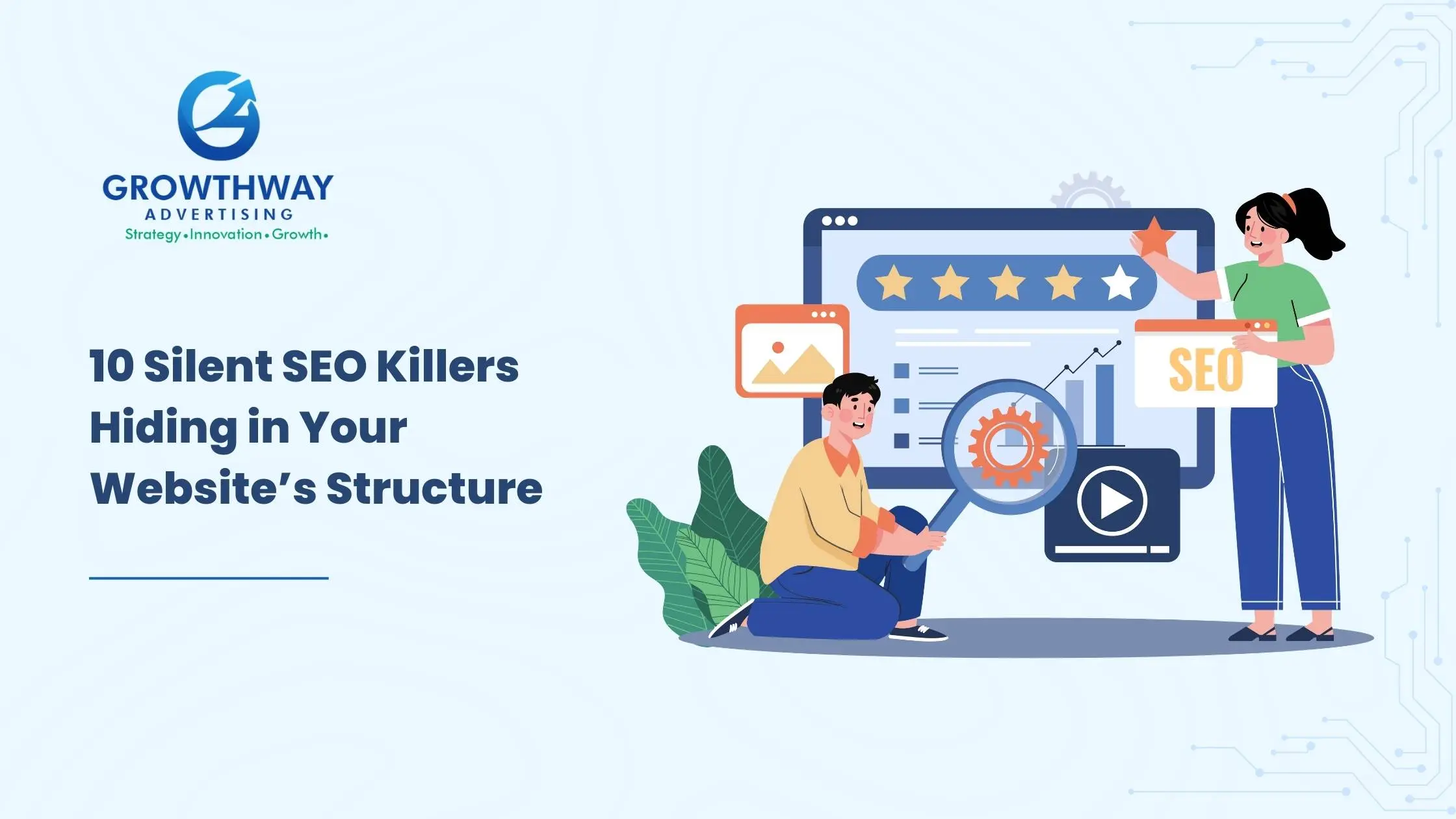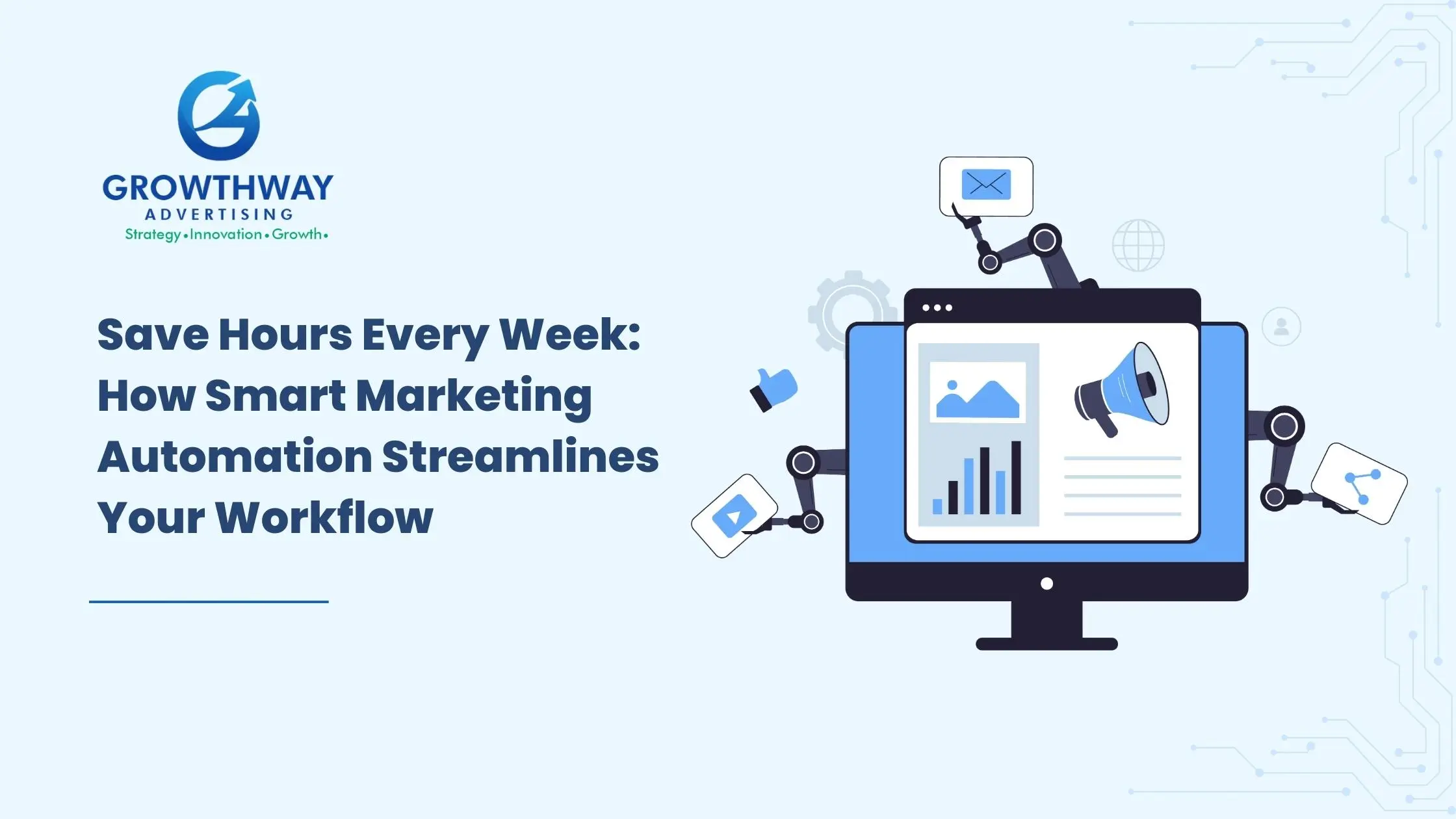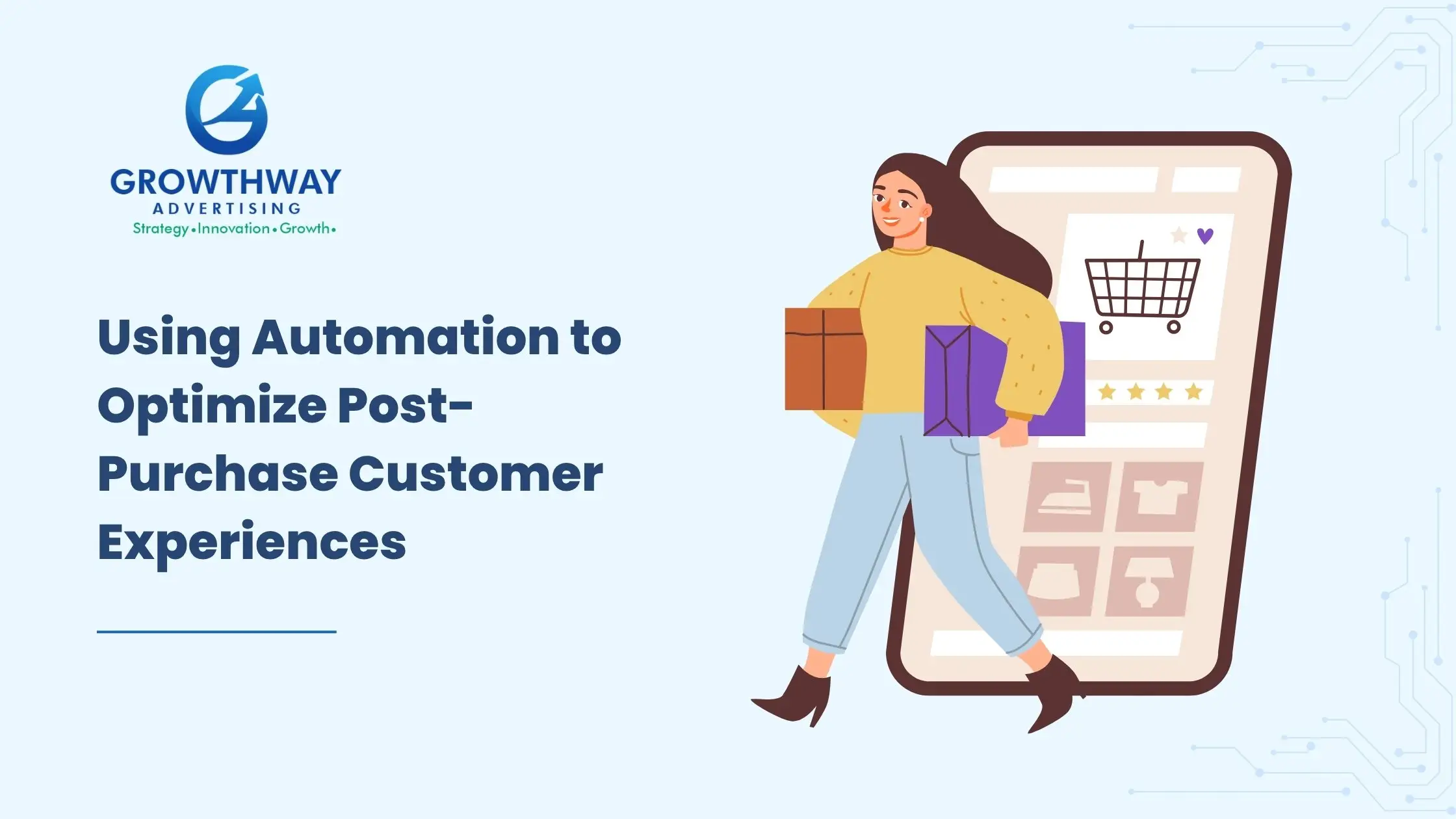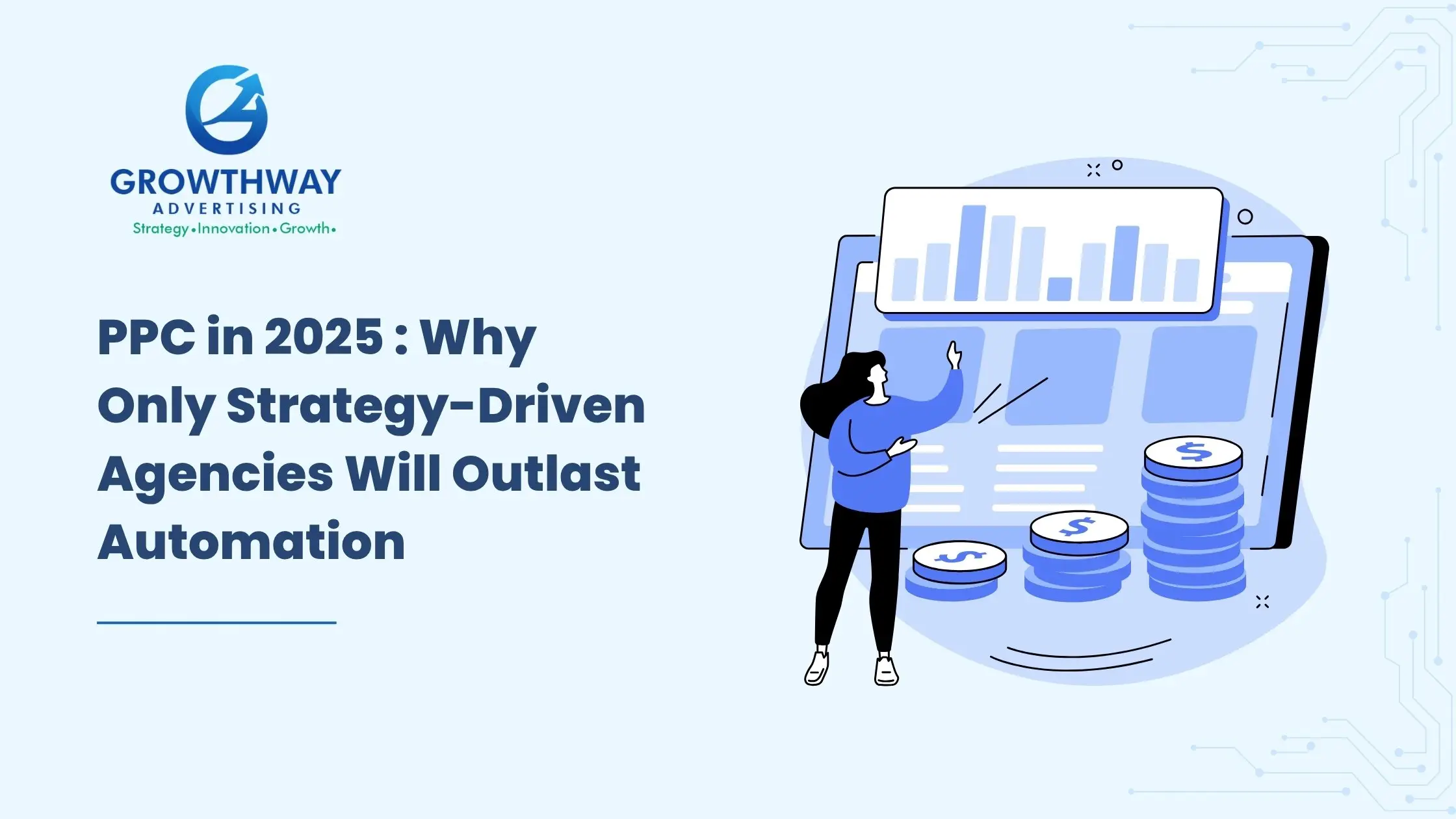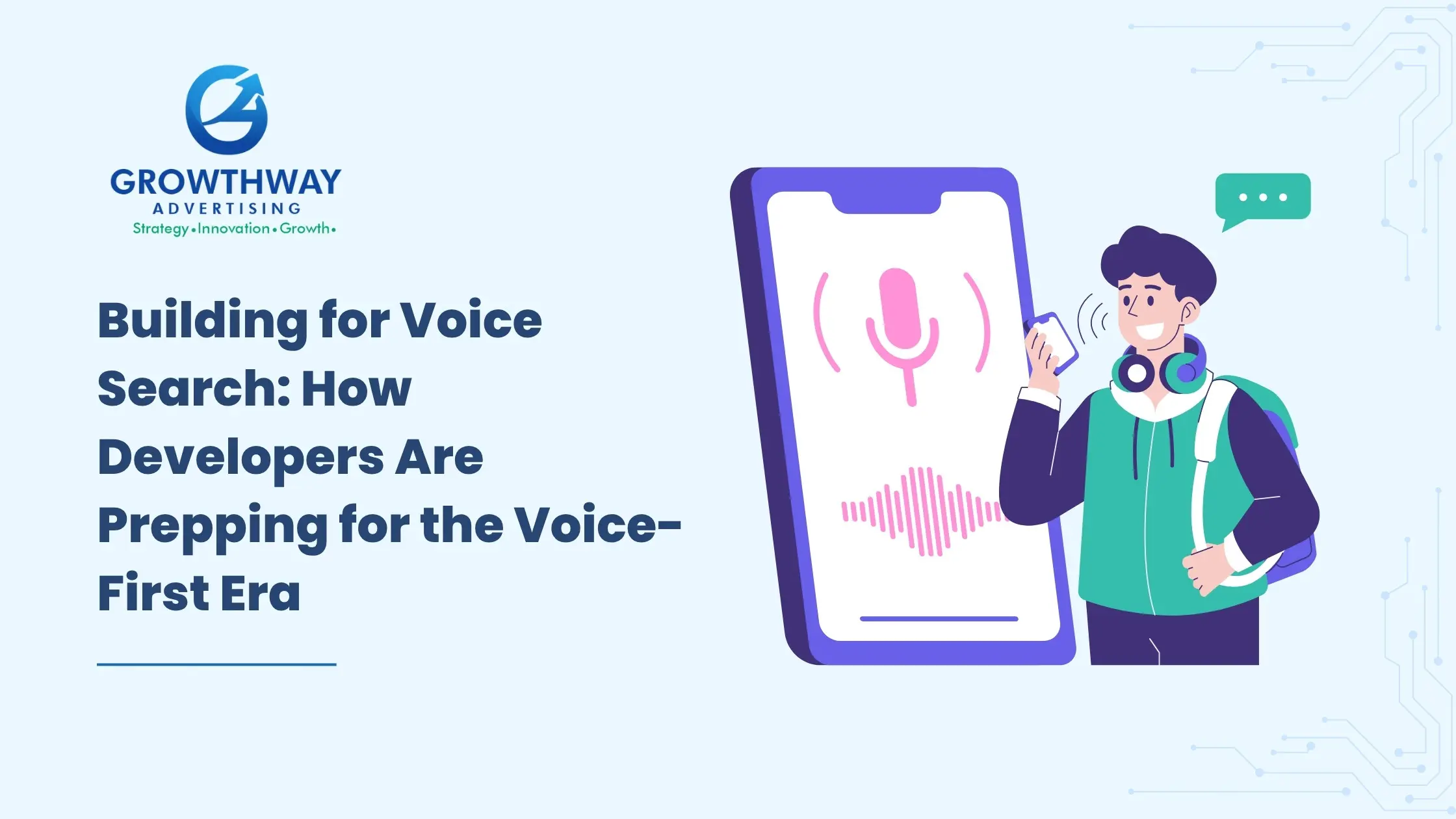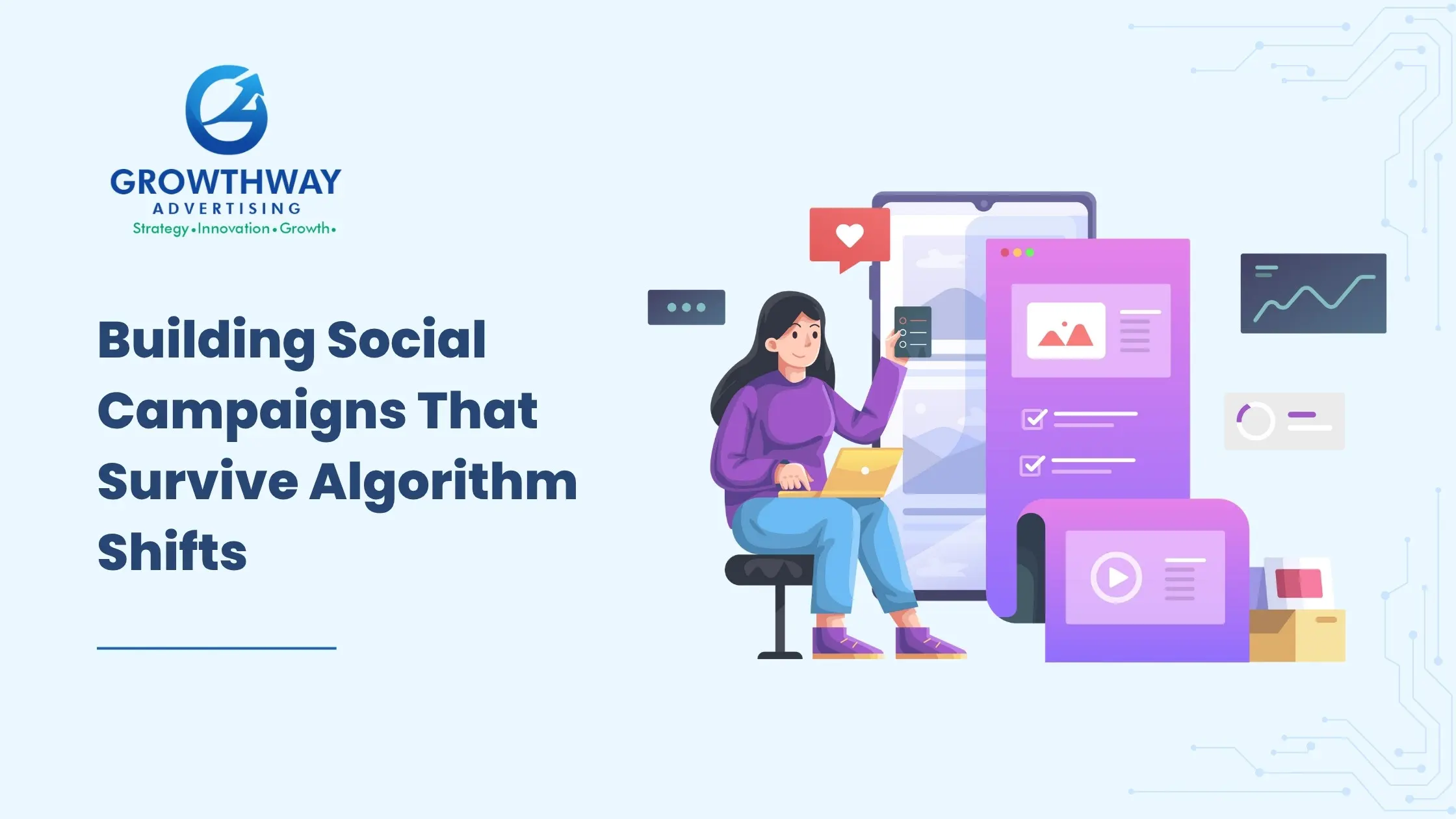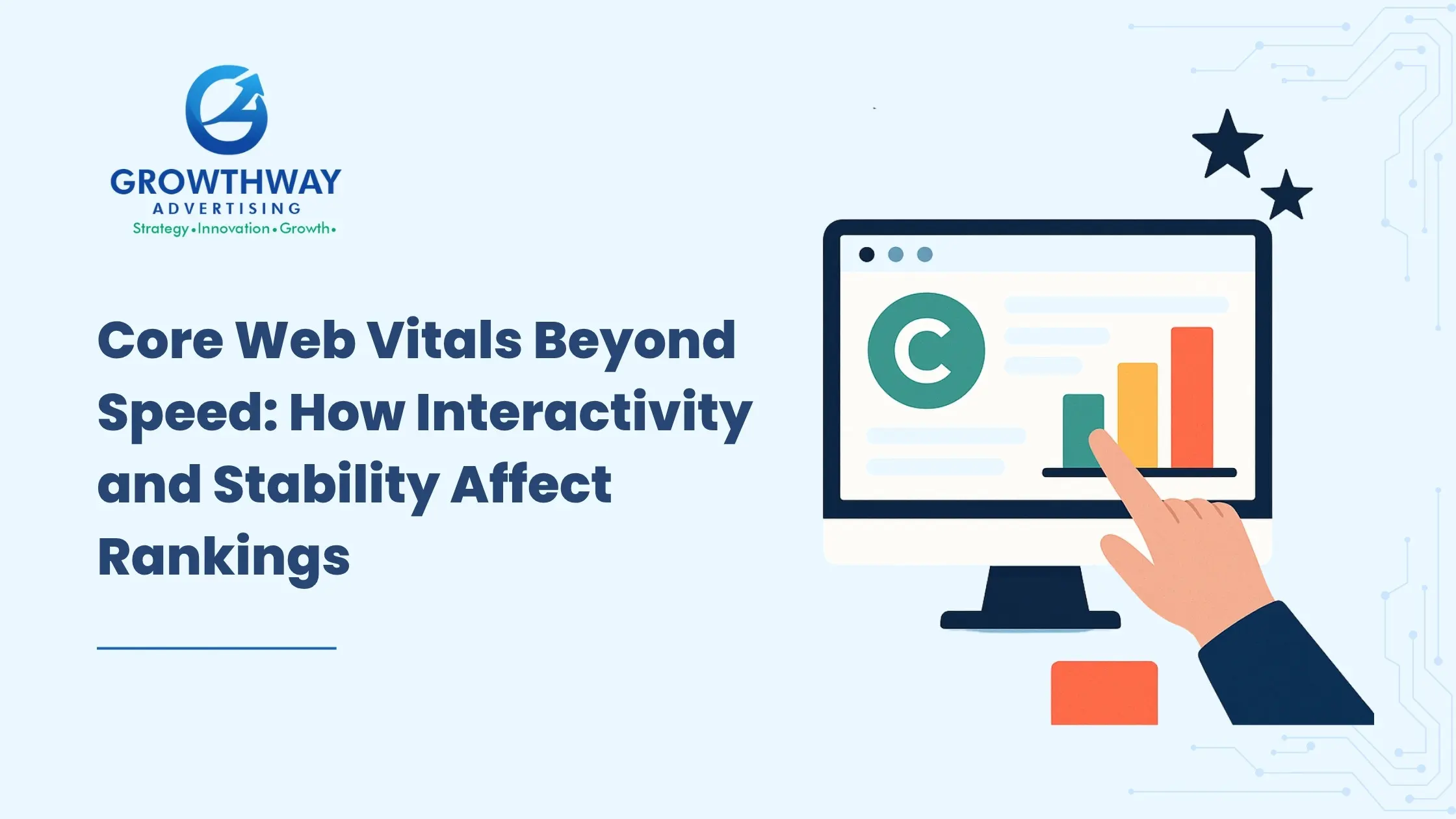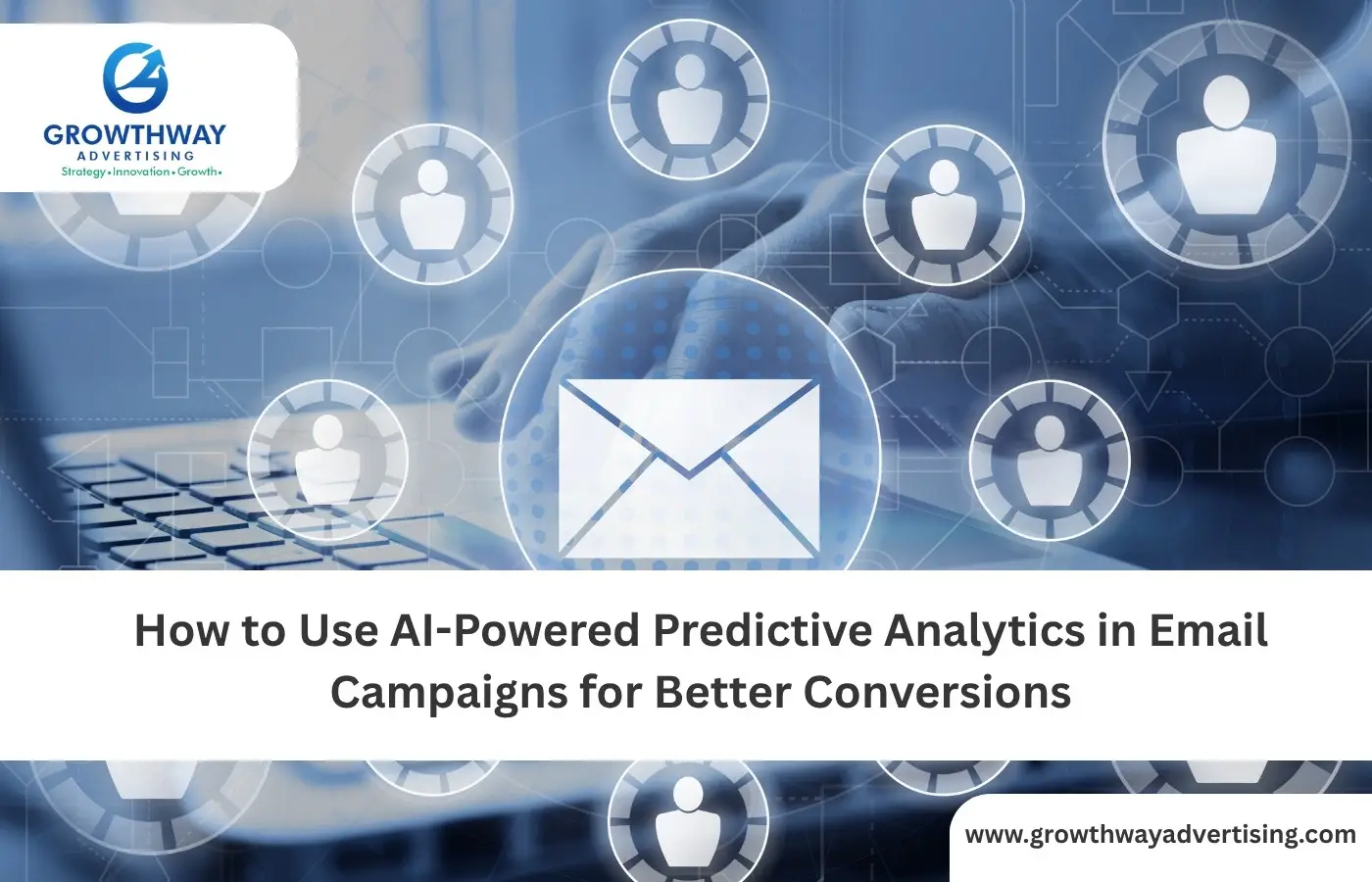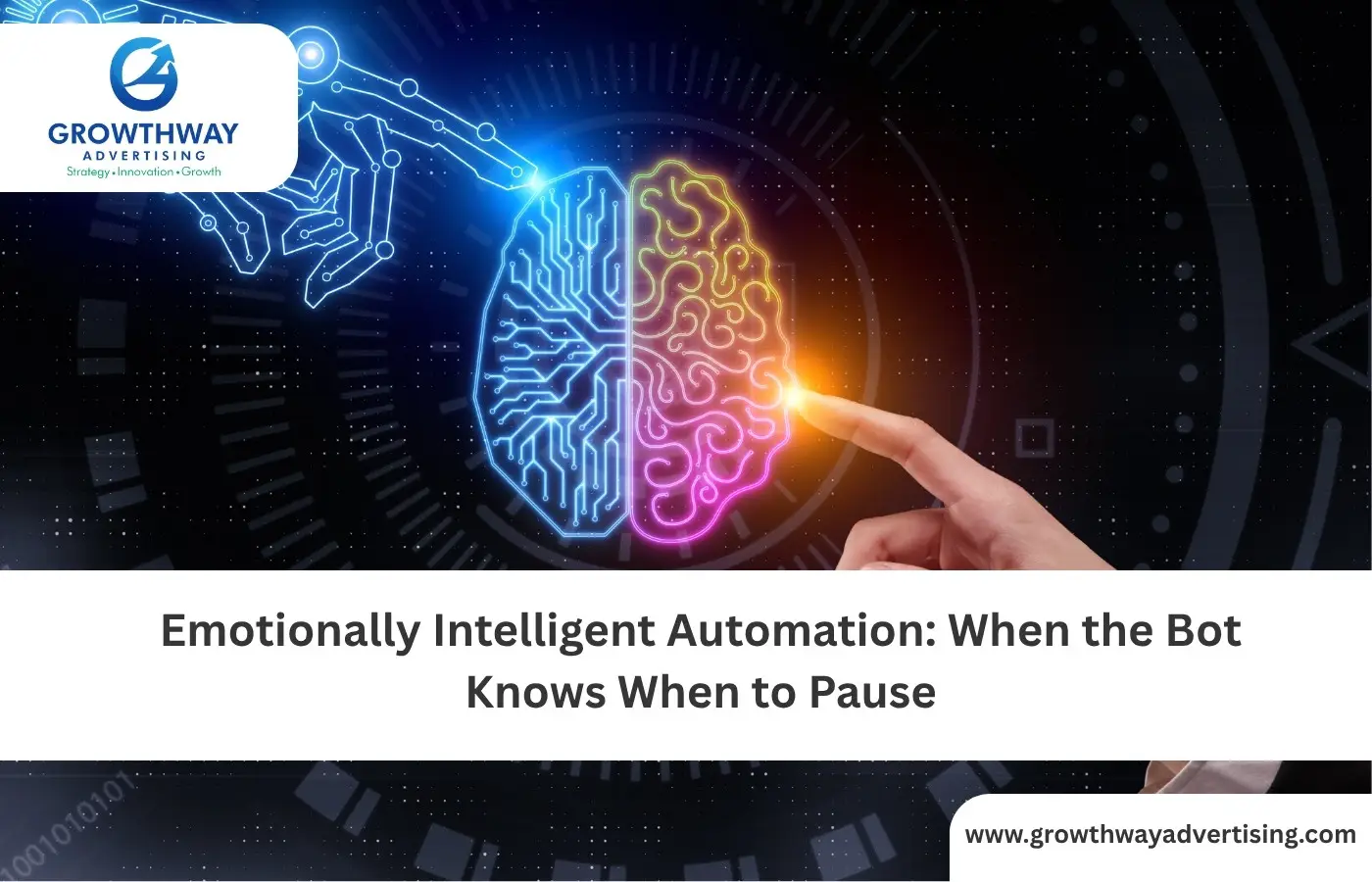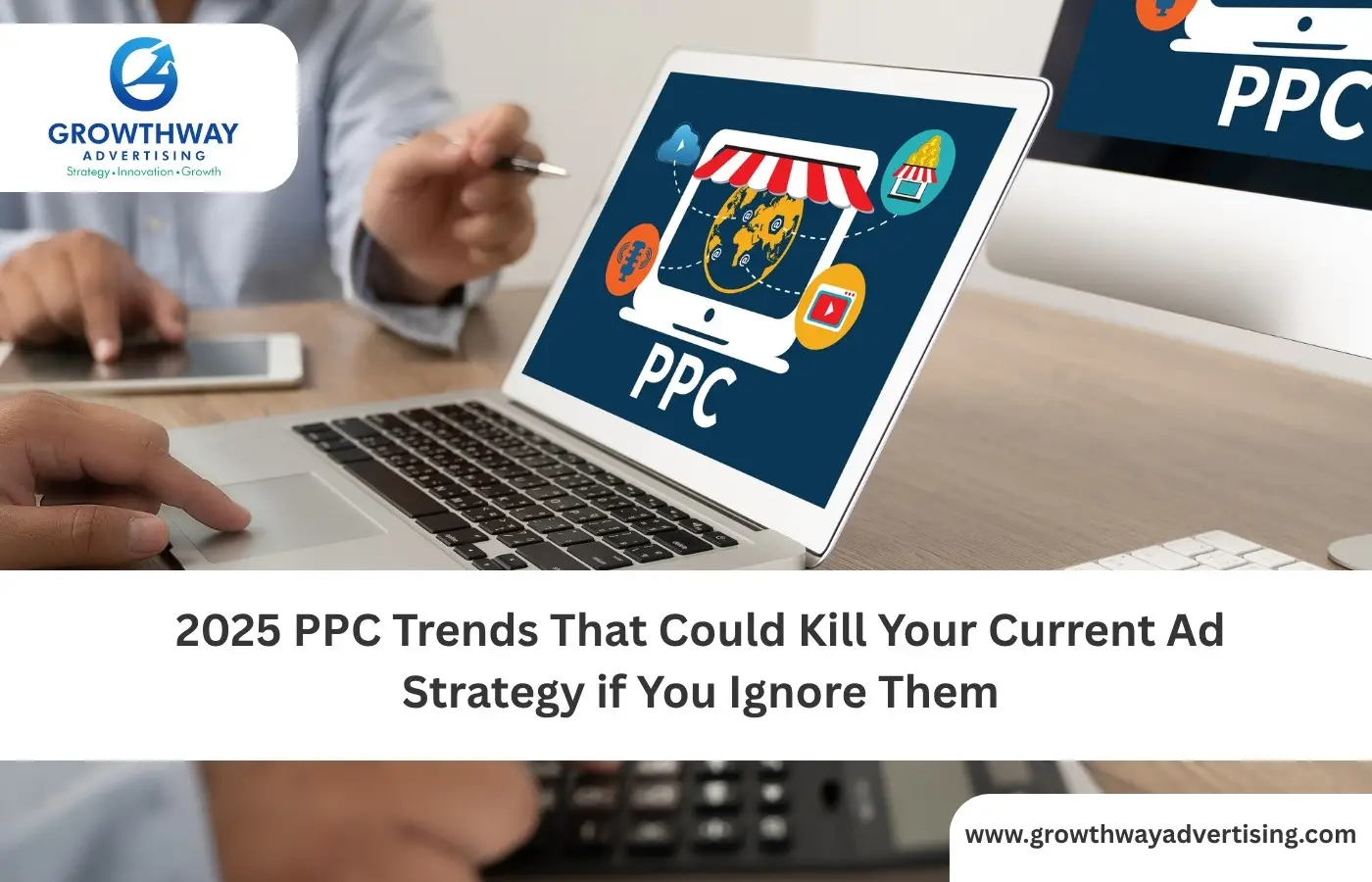Great audience segmentation is a starting point to unlock the whole potential of marketing automation services. The current information-driven approaches go beyond surface-level demographics to use profound information about user preferences, behaviors, and motivations- changing how brands engage their target customers. Businesses use a combination of dynamic segmentation techniques and real-world data to create high-performing campaigns and have each outreach, ad, and piece of content optimally customized.
Why Audience Segmentation Matters for Automated Marketing
Audience segmentation will help break down groups of customers into micro-targets so that messages and offers can be tailored to create maximum resonance. As competition in the marketplace intensifies in 2025, automated marketing services will rely on segmentation to drive deeper interest, wiser lead generation, and more optimized conversions. Segmentation helps marketers access actionable data, optimize spend and achieve measurable growth with each campaign.
Types of Segmentation For Maximum Impact
Effective marketing automation firms’ workflows use many forms of segmentation. Begin with center strategies, but then leverage by adding a new methodology of using advanced strategies to build genuinely personal experiences.
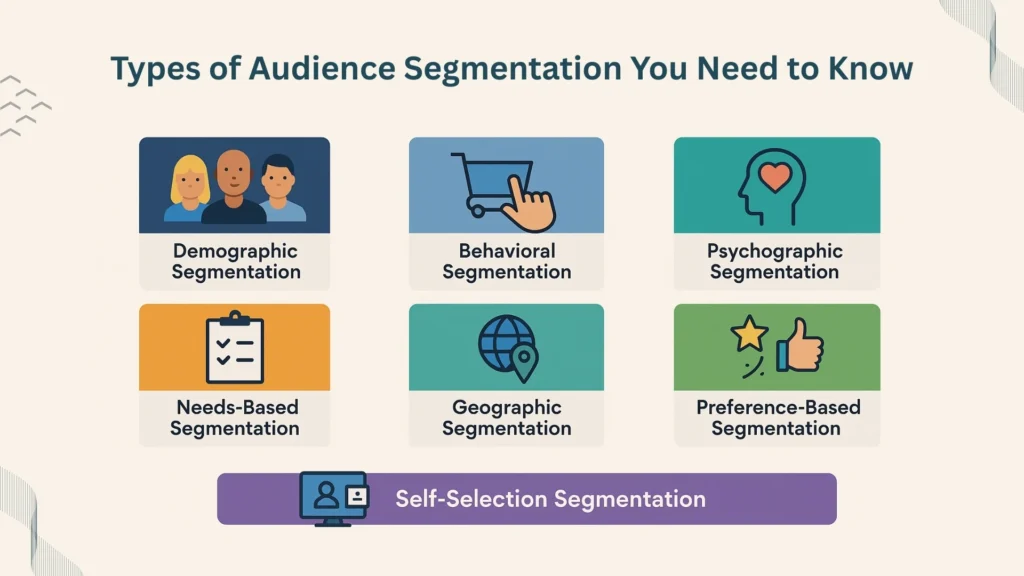
Demographic Segmentation
Demographic segmentations revolve around such characteristics as age, gender, location, education, and income. This enables marketers to ensure messaging and products match particular life stages and preferences, and each offer becomes more convincing.
Behavioral Segmentation
Behavioral segmentation reveals concealed patterns: monitoring the browsing behavior of users, their purchasing behavior, what they read and how they interact. An example of this is to segment trial customers who have gone through onboarding flows, or power users who request features, to deliver personalized nudges and upgrade campaigns. Algorithms define when a customer is near hitting a plan limit and automatically offer an upsell targeted at that customer.
Psychographic / Needs-Based Segmentation
Go beyond what users do; learn why they do it. Psychographic segmentation organizes audiences by attitudes, values, interests, and motivations. Brands now map segments based on emotional drivers and desired outcomes. Needs-based segmentation focuses on the causes of pain and the product usage and guides content and propositions that solve real issues.
Geographic and Firmographic Segmentation
Geo-targeting delivers localized messages. In B2B, firmographic segmentation focuses on company size, industry, or decision-maker roles, making campaigns relevant for complex sales cycles.
Preference-Based and Self-Selection Segmentation
Empower users to self-select by enabling opt-ins, quizzes, or interactive flows. This uncovers intent in real time, improving data quality and allowing segments to evolve based on customer input.
Leveraging Customer Personas in Marketing Automation
It is important to develop detailed customer personas. Personas are a composite profile of each segment based on demographic, behavioral, psychographic and needs-based attributes. Marketing automation consultation allows brands to optimize personas based on CRM data, surveys, and AI. Personas assist in the development of customized journeys to assist marketers create content, offers, and calls-to-action that aligns with actual expectations.
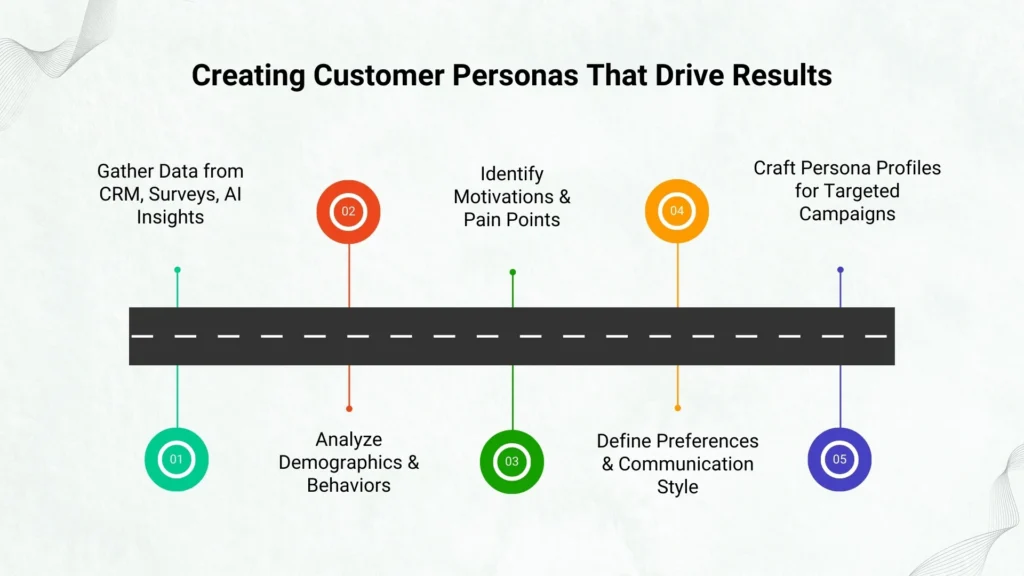
Brands open tailor-made customer experience with intelligent persona creation. In particular, an early-stage SaaS adopter persona is provided with educational onboarding and product tutorials, whereas an enterprise IT decision-maker receives a case study deep-dive and ROI calculators.
Automated Segmentation Tools and Data Sources
Modern marketing automation services integrate AI-powered platforms that segment audiences using advanced data analytics. Machine learning perfects segments when users engage with emails, advertisements, applications, and web pages, which allows personalization in real-time. Platforms bring first-party data, social signals, user surveys, and behavior tracking together to create deeper insights.
Leading tools use CRM integrations to build meaningful segments, automate campaign triggers, and build personalized marketing automation at scale. HubSpot is a behavioral flow tool used by brands, Klaviyo is an e-commerce list segmentation tool, and Userpilot is an in-app segmentation journey tool.
Personalizing Customer Journeys for Lead Generation and Enhanced Conversions
A winning marketing strategy connects audience segmentation to automated, personalized user journeys. Start with a map of all customer touchpoints, starting with the first interaction to buying a product and message each point differently.
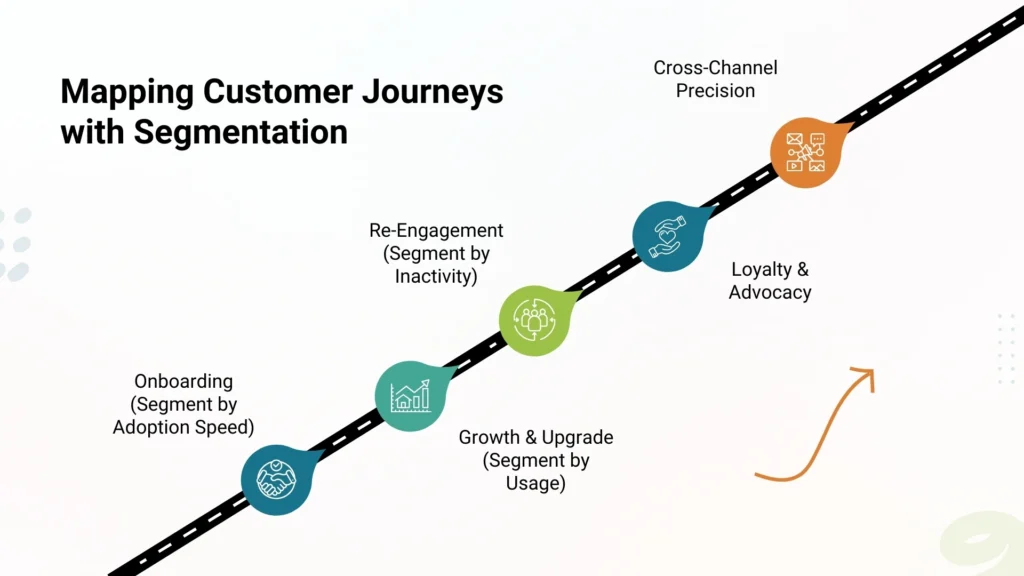
Onboarding Segmentation: Segment trial users into fast adopters, slow adopters, and at-risk churners. Use onboarding tooltips, step-by-step guides, and progressive campaigns for each group.
Upgrade and Upsell Targeting: Track feature usage and segment users who reach plan limits. Trigger upgrade prompts at key friction points.
Re-engagement campaigns: Identify disengaged users and deliver personalized win-back flows, timed nudges, exclusive offers, and interactive content to revive interest.
Launch Campaign Segmentation: For product launches, segment by past engagement, feature requestors, and highest-value customers. Announce updates to those most likely to adopt early.
Cross-Channel Precision: Push segmented messaging through email, SMS, social media, and remarketing ads based on user preferences.
Filling Gaps With Advanced and Innovative Segmentation
Most marketers segment using standard techniques, but brands that want to be differentiated go beyond the fundamentals:
Interactive Segmentation: Integrate quizzes, polls, or product recommendation engines, letting users guide their own journey. This method surfaces high intent and increases lead generation.
B2B vs. B2C Distinctions: Customize segmentation for complex buying cycles, combining firmographic data with executive personas for B2B; use lifestyle, event triggers, and psychographics for B2C.
Segmenting for Emerging Channels: Apply segmentation strategies to WhatsApp, Telegram, voice assistants, and AR/VR campaigns. Use conversational cues, location data, and real-time intent signals for hyper-personalized outreach.
Mistake-Proof Segmentation: Periodically audit segment definitions and campaign data to ensure accuracy. Flag common errors overlapping segments, outdated data, and missed opt-in signals and use machine learning to auto-correct.
AI and Data: Shaping the Future of Segmentation
The future of segmentation is provided by Artificial Intelligence, which provides dynamic predictive insights. Artificial intelligence-powered platforms recognize micro-trends and make adjustments to campaigns. As AR and VR become more widespread, segmentation evolves to power immersive, personalized journeys where digital experiences reflect real-world interests and moment-by-moment behavior.
Machine learning keeps updating segments as users continuously send real-time signals and make each campaign smarter and each message more relevant. Within event marketing, AI-based tools such as automated lead finders are designed to process attendee engagement to hyper-target outreach with the aim of ensuring high-quality leads are prioritized and cultivated.
Bringing It All Together: Best Segmentation Practices
To master audience segmentation in the age of marketing automation company solutions:
- Define clear segment goals and ideal customer profiles.
- Use mixed-data approaches behavioral, psychographic, firmographic, and preference-driven.
- Empower users to self-select segments and adjust journeys as real-world data evolves.
- Leverage AI-based automation to refine segments in real time and deliver personalized marketing automation across channels.
- Design campaigns for every stage of customer journeys, from first contact to loyalty.
- Continually monitor, test, and adjust segment definitions for sharper targeting and improved ROI.
- Build re-engagement campaigns and win-back flows for disengaged segments using automated triggers.
- Map out enhanced conversions for every segment and use performance metrics for ongoing optimization.
These practices reaffirm the businesses to provide marketing automation consultation that contributes value in all touchpoints, develops enduring engagement, and maintains brands on the frontline in an ever-evolving digital market environment. Marketers who can accept the complexity of segmentation and use powerful tools and data to develop personalized, timely, and targeted customer experiences are in the future.
FAQ’s
It boosts engagement, enhances conversions, and optimizes lead generation by delivering relevant content tailored to specific audience groups along personalized customer journeys.
Common types include demographic, behavioral, psychographic, geographic, needs-based, and preference-based segmentation, often combined for better precision.
Customer personas synthesize data into detailed profiles that help marketers tailor personalized marketing automation campaigns aligned to specific audience needs and motivations.
Identify disengaged segments using behavior data and design automated win-back flows with tailored offers and reminders to revive interest and loyalty.
AI enables predictive, real-time segmentation, automatically optimizing segments and personalizing journeys based on evolving user data and trends.
Avoid overlapping segments, outdated data, ignoring consent preferences, and failing to regularly audit and optimize segment definitions for best results.

